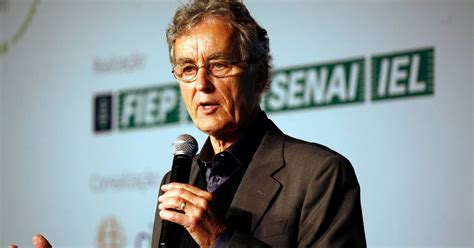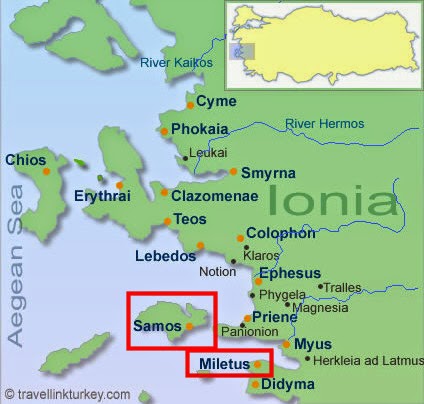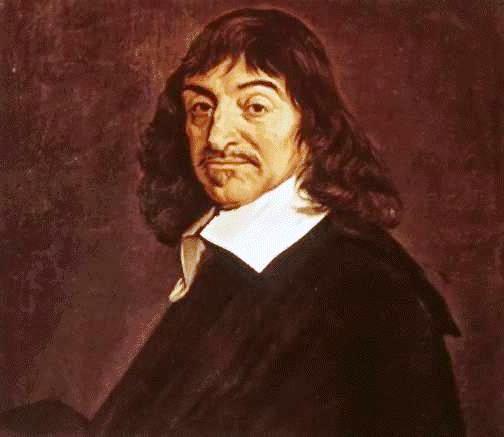|
home | what's new | other sites | contact | about |
|||
|
Word Gems exploring self-realization, sacred personhood, and full humanity
Quantum Mechanics
return to "Quantum Mechanics" main-page
website: https://www.fritjofcapra.net/ Excerpts from chapter one of Dr. Fritjof's book, The Tao Of Physics
If physics leads us today to a world view which is essentially mystical, it returns, in a way, to its beginning, 2,500 years ago. It is interesting to follow the evolution of Western science along its spiral path, starting from the mystical philosophies of the early Greeks, rising and unfolding in an impressive development of intellectual thought that increasingly turned away from its mystical origins to develop a world view which is in sharp contrast to that of the Far East. In its most recent stages, Western science is finally overcoming this view and coming back to those of the early Greek and the Eastern philosophies. This time, however, it is not only based on intuition, but also on experiments of great precision and sophistication, and on a rigorous and consistent mathematical formalism. The roots of physics, as of all Western science, are to be found in the first period of Greek philosophy in the sixth century B.C., in a culture where science, philosophy and religion were not separated. The sages of the Milesian school in lonia...
Miletus was once among the greatest and wealthiest of Greek cities
...were not concerned with such distinctions. 'physics' originally meant 'enquiring into the deepest essense of things' Their aim was to discover the essential nature, or real constitution, of things which they called ‘physis’. The term ‘physics’ is derived from this Greek word and meant therefore, originally, the endeavour of seeing the essential nature of all things. This, of course, is also the central aim of all mystics, and the philosophy of the Milesian school did indeed have a strong mystical flavour. The Milesians were called ‘hylozoists’, or ‘those who think matter is alive’, by the later Greeks, because they saw no distinction between animate and inanimate, spirit and matter. In fact, they did not even have a word for matter, since they saw all forms of existence as manifestations of the ‘physis’, endowed with life and spirituality. Thus Thales [of Miletus, "father of philosophy"] declared all things to be full of gods and Anaximander saw the universe as a kind of organism which was supported by ‘pneuma’, the cosmic breath, in the same way as the human body is supported by air. Heraclitus of Ephesus The monistic and organic view of the Milesians was very close to that of ancient Indian and Chinese philosophy, and the parallels to Eastern thought are even stronger in the philosophy of Heraclitus of Ephesus. Heraclitus believed in a world of perpetual change, of eternal ‘Becoming’. For him, all static Being was based on deception and his universal principle was fire, a symbol for the continuous flow and change of all things. Heraclitus taught that all changes in the world arise from the dynamic and cyclic interplay of opposites and he saw any pair of opposites as a unity. This unity, which contains and transcends all opposing forces, he called the Logos. The split of this unity began with the Eleatic school, which assumed a Divine Principle standing above all gods and men. This principle was first identified with the unity of the universe, but was later seen as an intelligent and personal God who stands above the world and directs it. Thus began a trend of thought which led, ultimately, to the separation of spirit and matter and to a dualism which became characteristic of Western philosophy. the origin of a fundamental precept of modern science A drastic step in this direction was taken by Parmenides of Elea who was in strong opposition to Heraclitus. He called his basic principle the Being and held that it was unique and invariable. He considered change to be impossible and regarded the changes we seem to perceive in the world as mere illusions of the senses. The concept of an indestructible substance as the subject of varying properties grew out of this philosophy and became one of the fundamental concepts of Western thought. In the fifth century B.C., the Greek philosophers tried to overcome the sharp contrast between the views of Parmenides and Heraclitus. In order to reconcile the idea of unchangeable Being (of Parmenides) with that of eternal Becoming (of Heraclitus), they assumed that the Being is manifest in certain invariable substances, the mixture and separation of which gives rise to the changes in the world. the concept of a static atom is an outgrowth of Parmenides' philosophy This led to the concept of the [purported unchangeable] atom, the smallest indivisible unit of matter, which found its clearest expression in the philosophy of Leucippus and Democritus. The Greek atomists drew a clear line between spirit and matter, picturing matter as being made of several ‘basic building blocks’. These were purely passive and intrinsically dead particles moving in the void. The cause of their motion was not explained, but was often associated with external forces which were assumed to be of spiritual origin and fundamentally different from matter. In subsequent centuries, this image became an essential element of Western thought, of the dualism between mind and matter, between body and soul. As the idea of a division between spirit and matter took hold, the philosophers turned their attention to the spiritual world, rather than the material, to the human soul and the problems of ethics. These questions were to occupy Western thought for more than two thousand years after the culmination of Greek science and culture in the fifth and fourth centuries B.C. the reason why Aristotle never tested his theory concerning "which ball falls faster" is that information about the material world was deemed to be second-rate The scientific knowledge of antiquity was systematized and organized by Aristotle, who created the scheme which was to be the basis of the Western view of the universe for two thousand years. But Aristotle himself believed that questions concerning the human soul and the contemplation of God’s perfection were much more valuable than investigations of the material world. The reason the Aristotelian model of the universe remained unchallenged for so long was precisely this lack of interest in the material world, and the strong hold of the Christian Church which supported Aristotle’s doctrines throughout the Middle Ages. Further development of Western science had to wait until the Renaissance, when men began to free themselves from the influence of Aristotle and the Church and showed a new interest in nature. In the late fifteenth century, the study of nature was approached, for the first time, in a truly scientific spirit and experiments were undertaken to test speculative ideas. As this development was paralleled by a growing interest in mathematics, it finally led to the formulation of proper scientific theories, based on experiment and expressed in mathematical language. Galileo was the first to combine empirical knowledge with mathematics and is therefore seen as the father of modern science. The birth of modern science was preceded and accompanied by a development of philosophical thought which led to an extreme formulation of the spirit/matter dualism.
This formulation appeared in the seventeenth century in the philosophy of Rene Descartes who based his view of nature on a fundamental division into two separate and independent realms; that of mind (res cogitans), and that of matter (res extensa). The ‘Cartesian’ division allowed scientists to treat matter as dead and completely separate from themselves, and to see the material world as a multitude of different objects assembled into a huge machine. Newtonianism is built upon Cartesian dualism Such a mechanistic world view was held by Isaac Newton who constructed his mechanics on its basis and made it the foundation of classical physics. From the second half of the seventeenth to the end of the nineteenth century, the mechanistic Newtonian model of the universe dominated all scientific thought. It was paralleled by the image of a monarchical God who ruled the world from above by imposing his divine law on it. The fundamental laws of nature searched for by the scientists were thus seen as the laws of God, invariable and eternal, to which the world was subjected. The philosophy of Descartes was not only important for the development of classical physics, but also had a tremendous influence on the general Western way of thinking up to the present day. Descartes’ famous sentence ‘Cogito ergo sum’ - ‘I think, therefore I exist’- has led Western man to equate his identity with his mind, instead of with his whole organism. As a consequence of the Cartesian division, most individuals are aware of themselves as isolated egos existing ‘inside’ their bodies. The mind has been separated from the body and given the futile task of controlling it, thus causing an apparent conflict between the conscious will and the involuntary instincts. unending fragmenation Each individual has been split up further into a large number of separate compartments, according to his or her activities, talents, feelings, beliefs, etc., which are engaged in endless conflicts generating continuous metaphysical confusion and frustration. (See the lectures of Krishnamurti on this fragmentation and dualism.) This inner fragmentation of man mirrors his view of the world ‘outside’ which is seen as a multitude of separate objects and events. The natural environment is treated as if it consisted of separate parts to be exploited by different interest groups. The fragmented view is further extended to society which is split into different nations, races, religious and political groups. The belief that all these fragments - in ourselves, in our environment and in our society - are really separate can be seen as the essential reason for the present series of social, ecological and cultural crises. It has alienated us from nature and from our fellow human beings. It has brought a grossly unjust distribution of natural resources creating economic and political disorder; an ever rising wave of violence, both spontaneous and institutionalized, and an ugly, polluted environment in which life has often become physically and mentally unhealthy. The Cartesian division and the mechanistic world view have thus been beneficial and detrimental at the same time. They were extremely successful in the development of classical physics and technology, but had many adverse consequences for our civilization. It is fascinating to see that twentieth-century science, which originated in the Cartesian split and in the mechanistic world view, and which indeed only became possible because of such a view, now overcomes this fragmentation and leads back to the idea of unity expressed in the early Greek and Eastern philosophies. In contrast to the mechanistic Western view, the Eastern view of the world is ‘organic’. For the Eastern mystic, all things and events perceived by the senses are interrelated, connected, and are but different aspects or manifestations of the same ultimate reality.
Our tendency to divide the perceived world into individual and separate things and to experience ourselves as isolated egos in this world is seen as an illusion which comes from our measuring and categorizing mentality. It is called avidya, or ignorance, in Buddhist philosophy and is seen as the state of a disturbed mind which has to be overcome… This book aims at improving the image of science by showing that there is an essential harmony between the spirit of Eastern wisdom and Western science. It attempts to suggest that modern physics goes far beyond technology, that the way - or Tao - of physics can be a path with a heart, a way to spiritual knowledge and self-realization.
|
|||
|
|






